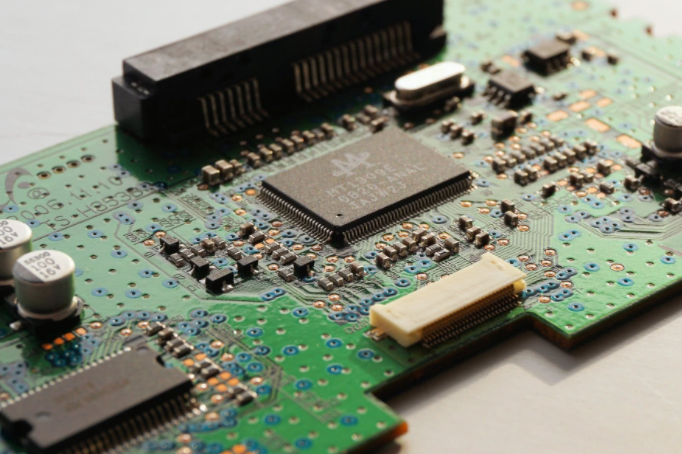What are the processes and difficulties in the production of rigid-flex board?
The birth and development of FPC and PCB gave birth to a new product of soft and hard board. Rigid-flex board is a circuit board with FPC characteristics and PCB characteristics that are combined with the flexible circuit board and the rigid circuit board after pressing and other processes, according to the relevant process requirements. The development prospects of rigid-flex board are very impressive. However, the manufacturing process of the rigid-flex board is more complicated, and some of the key technologies and difficulties are more difficult to control; let professional PCB manufacturers take the six-layer flexible and rigid board as an example to give you a detailed introduction.
1. The basic production process of soft and hard board:
1. Cutting: Cut a large area of copper clad laminate substrate into the size required by the design.
2. Cutting of the soft board substrate: cut the original roll material (substrate, pure glue, cover film, PI reinforcement, etc.) to the size required by the design.
3. Drilling: Drilling through holes for line connection.
4. Black hole: The toner is used to make the carbon powder adhere to the hole wall, which plays a good role in connection.
5. Copper plating: A layer of copper is plated in the hole to achieve conduction.
6. Alignment exposure: align the film at the corresponding hole position of the dry film that has been pasted to ensure that the film pattern and the board surface are correctly overlapped, and transfer to the dry film on the board surface through the principle of optical imaging.
7. Development: develop the dry film of the unexposed area of the circuit pattern by potassium carbonate or sodium carbonate, leaving the dry film pattern of the exposed area.

8. Etching: After developing the circuit pattern, the area where the copper surface is exposed is etched away by the etching solution, leaving the pattern part covered by the dry film.
9. AOI: Through the principle of optical reflection, the image is transmitted to the equipment for processing to detect open and short circuit problems.
10. Laminating: Cover the copper foil circuit with an upper protective film to avoid oxidation or short circuit of the circuit, and at the same time play the role of insulation and product bending.
11. Pressing: The pre-folded cover film and reinforced board are pressed into a whole through high temperature and high pressure.
12. Punching type: Using a mold and a mechanical punching machine, the working plate is punched into the shipping size that meets the customer's production and use.
13. Secondary bonding: the soft and hard board is laminated.
14. Secondary pressing: Under vacuum conditions, the soft board and the hard board are pressed together by hot pressing.
15. Secondary drilling: Drill through holes connecting the soft board and the hard board.
16. Plasma cleaning: Use plasma to achieve effects that cannot be achieved by conventional cleaning methods.
17. Immersion copper (hard board): Immerse a layer of copper in the hole to achieve conduction.
18. Copper plating (hard board): Use electroplating to increase the thickness of hole copper and surface copper.
19. Circuit (sticking dry film): Paste a layer of photosensitive material on the surface of the plated copper plate as a film for graphic transfer.
20. Etching the AOI connection: dissolve the copper surface outside the circuit pattern to etch the required pattern.
21. Solder mask (silk screen): Cover all circuits and copper surfaces to protect the circuits and insulation.
22. Solder mask (exposure): The ink undergoes photopolymerization, and the ink in the silk screen area remains on the board and solidifies.
23. Laser uncovering: Use a laser cutting machine to perform a certain degree of laser cutting to remove the hard board part and expose the soft board part.
24. Assembly: Paste steel sheet or reinforcement on the corresponding area of the board surface to play the role of bonding and increase the hardness of the FPC.
25. Test: Use a probe to test whether there is an open/short circuit.
26. Characters: Mark symbols are printed on the board surface to facilitate subsequent assembly and identification.
27. The gong board: Through the CNC machine tool, the required shape is milled according to the customer's requirements.
28. FQC: Fully inspect the appearance of finished products according to customer requirements to ensure product quality.
29. Packaging: Pack the fully inspected Ok board according to the customer's requirements, and store it for shipment.
2. Difficulties in production:
1. Soft board part:
(1) PCB production equipment makes soft boards. Because the soft board materials are soft and thin, all horizontal lines need to be carried by a traction board to avoid scrapping of the board.
(2) Press the PI cover film. Pay attention to the local PI covering film and the quick pressure parameters. The pressure must reach 2.45MPa during fast pressing, smooth and compact, and there should be no problems such as bubbles and cavities.
2. Hard board part:
(1) The hard board adopts controlled depth milling to open the window, and the PP should adopt NO-FLOW PP to prevent excessive pressure overflow.
(2) Control of expansion and contraction of soft and hard board. Due to the poor expansion and shrinkage stability of the soft board material, it is necessary to give priority to the production of the soft board and the laminated PI cover film, and the hard board part is made according to its expansion and shrinkage coefficient.
The above is a detailed explanation of the production process and difficulties of the soft and hard board by the professional PCB manufacturer. I hope it will be helpful to you.